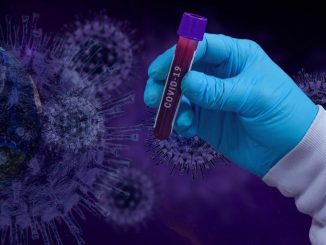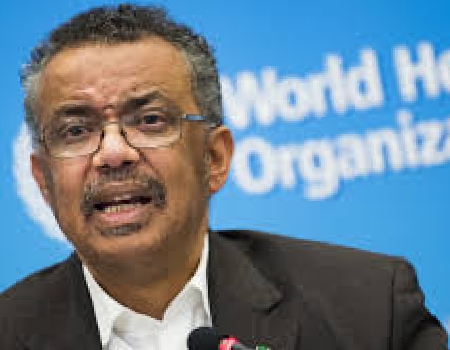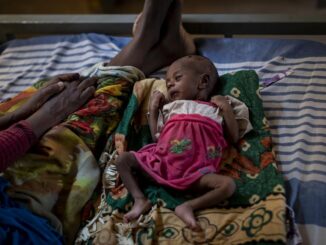
The World Health Organization (WHO) on Monday recommended a new anti-malaria vaccine for children, a move that could offer countries a cheaper and more readily available option than the world’s first shot against the parasitic disease.
The recommendation for new vaccine, R21/Matrix-M, for the prevention of malaria in children, follows advice from the WHO: Strategic Advisory Group of Experts on Immunization (SAGE) and the Malaria Policy Advisory Group (MPAG) and was endorsed by the WHO Director-General following its regular biannual meeting held on 25-29 September.
WHO also issued recommendations on the advice of SAGE for new vaccines for dengue and meningitis, along with immunization schedule and product recommendations for COVID-19. WHO also issued key immunization programmatic recommendations on polio, IA2030 and recovering the immunization programme.
The R21 vaccine is the second malaria vaccine recommended by WHO, following the RTS,S/AS01 vaccine, which received a WHO recommendation in 2021. Both vaccines are shown to be safe and effective in preventing malaria in children and, when implemented broadly, are expected to have high public health impact. Malaria, a mosquito-borne disease, places a particularly high burden on children in the African Region, where nearly half a million children die from the disease each year.
ALSO READ: UN’s Amina Mohammed, NY Mayor Trumpet: Africa is next big thing in global business
A cheap malaria vaccine that can be produced on a massive scale has been recommended for use by the World Health Organization (WHO).
The vaccine has been developed by the University of Oxford and is only the second malaria vaccine to be developed.
Malaria kills mostly babies and infants, and has been one of the biggest scourges on humanity.
There are already agreements in place to manufacture more than 100 million doses a year.
It has taken more than a century of scientific effort to develop effective vaccines against malaria.
The disease is caused by a complex parasite, which is spread by the bite of blood-sucking mosquitoes. It is far more sophisticated than a virus as it hides from our immune system by constantly shape-shifting inside the human body.
That makes it hard to build up immunity naturally through catching malaria, and difficult to develop a vaccine against it.
It is almost two years to the day since the first vaccine – called RTS,S and developed by GSK – was backed by the WHO.
Two similar vaccines
Dr Tedros Adhanom Ghebreyesus, director-general of the WHO, said It was a moment of “great pleasure”.
“I used to dream of the day we would have a safe and effective vaccine against malaria, now we have two,” he said.
The WHO said the effectiveness of the two vaccines was “very similar” and there was no evidence one was better than the other.
ALSO READ:
However, the key difference is the ability to manufacture the University of Oxford vaccine – called R21 – at scale.
The world’s largest vaccine manufacturer – the Serum Institute of India – is already lined up to make more than 100 million doses a year and plans to scale up to 200 million doses a year.
So far there are only 18 million doses of RTS,S.
The WHO said the new R21 vaccine would be a “vital additional tool”. Each dose costs $2-4 (£1.65 to £3.30) and four doses are needed per person. That is about half the price of RTS,S.
The two vaccines use similar technologies and target the same stage of the malaria parasite’s lifecycle. However, the newer vaccine is easier to manufacture as it requires a smaller dose and uses a simpler adjuvant (a chemical given in the vaccine that jolts the immune system into action).
In 2021, there were 247 million cases of malaria and 619,000 people died, most of them children under the age of five. More than 95% of malaria is found in Africa.
Life-saving potential
Dr Matshidiso Moeti, the WHO regional director for Africa, said: “This second vaccine holds real potential to close the huge demand-and-supply gap.
“Delivered to scale and rolled out widely, the two vaccines can help bolster malaria prevention, control efforts and save hundreds of thousands of young lives.”
Data that has been published online, but has not been through the usual process of scientific review, shows the R21 vaccine is 75% effective at preventing the disease in areas where malaria is a seasonal.
The WHO’s strategic advisory group of experts said that figure was comparable to the first vaccine (RTS,S) in seasonal areas.
The effectiveness of malaria vaccines is lower in areas where the parasite is present all year round.
Prof Sir Adrian Hill, director of the Jenner Institute in Oxford where R21 was developed, said: “The vaccine is easily deployablecost-effectiveve and affordable, ready for distribution in areas where it is needed most, with the potential to save hundreds of thousands of lives a year.”
Gareth Jenkins, from Malaria No More UK, said: “The reality is that malaria financing globally is far from where it needs to be and annual deaths from malaria rose during the pandemic and are still above pre-pandemic levels, so we cannot afford to be complacent as new tools are developed.”




